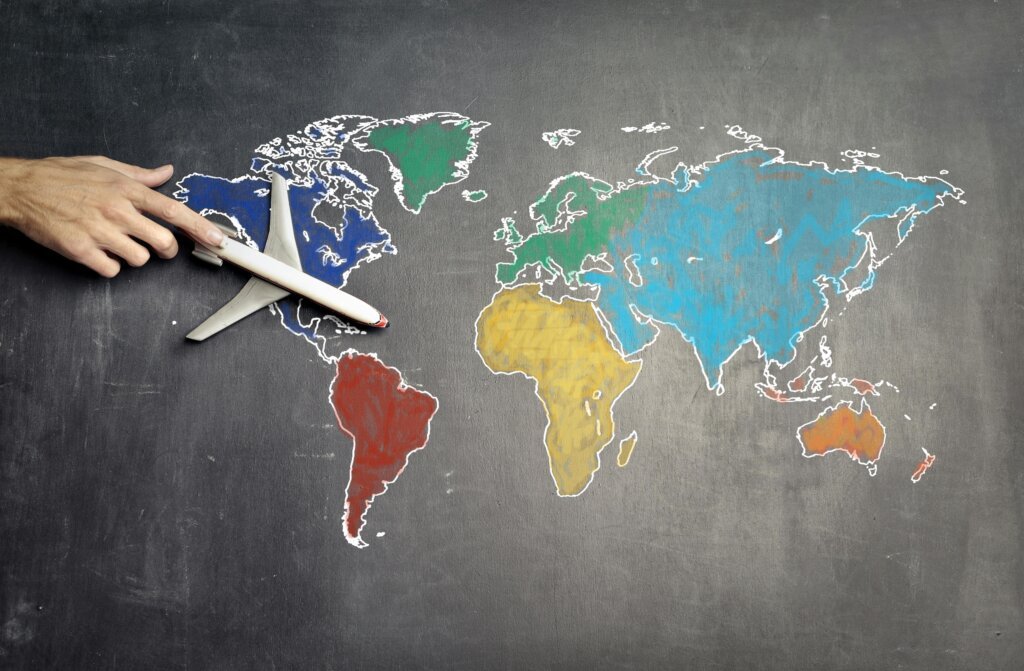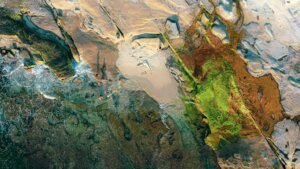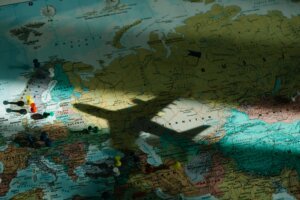Five Continents, Four Oceans: Exploring a Simplified View of Our Planet
When you look at a globe or a world map today, you’ll often see seven continents and five oceans. But historically and in certain educational or symbolic contexts, the world has been described more simply as “Five Continents and Four Oceans.”
What does this mean? And why is this version of Earth’s geography still discussed today?
In this blog post, we’ll explore the concept of five continents and four oceans, where it comes from, what it represents, and how it helps us better understand global geography in a meaningful and accessible way.
A Simpler Worldview: Origins of the “Five Continents, Four Oceans”
The phrase “Five Continents, Four Oceans” is a simplified model of the Earth that has been used in various cultural, historical, and educational settings, particularly during the 19th and 20th centuries.
- The five continents represent the major inhabited landmasses of the world.
- The four oceans represent the primary global water bodies that surround these landmasses.
This framework emphasizes accessibility and memorability, often taught to children or used in early geographic education before diving into more detailed classifications.
Let’s break down what each of these continents and oceans refers to.
The Five Continents
While modern geography recognizes seven continents, this simplified model merges some regions together. The five continents most commonly included are:
1. Africa
- Geographic size: Second largest continent
- Cultural diversity: Over 2,000 languages and numerous ethnic groups
- Natural wonders: Sahara Desert, Nile River, Serengeti, Victoria Falls
Africa is often referred to as the cradle of humanity, where the earliest human ancestors originated. It has a rich tapestry of civilizations, from ancient Egypt to the Kingdom of Mali and Great Zimbabwe.
2. America (North & South combined)
- Geographic extent: From the Arctic tundra of Canada to the rainforests of Brazil
- Historical significance: Indigenous civilizations (Incas, Aztecs, Mayans), European colonization
- Modern presence: Major global powers, biodiversity, and cultural influence
In this model, North America and South America are treated as one continent — often referred to simply as “the Americas.” Despite differences, the two share historical ties through colonization, migration, and trade.
3. Asia
- World’s largest continent by land and population
- Cradle of civilizations: Mesopotamia, Indus Valley, ancient China
- Modern role: Economic giants like China, Japan, and India
Asia is a continent of contrasts — from deserts to high mountain ranges, from tropical jungles to vast tundras. It’s home to 60% of the world’s population and countless cultures, religions, and languages.
4. Europe
- Small in size, enormous in impact
- Historical influence: Renaissance, Enlightenment, World Wars, European Union
- Tourism & culture: A magnet for architecture, cuisine, and historical sites
Europe has played a central role in shaping global history, science, art, and philosophy. Despite its compact geography, its diversity and legacy are immense.
5. Oceania (sometimes referred to as Australia)
- Geography: Includes Australia, New Zealand, Papua New Guinea, and the Pacific Islands
- Unique biodiversity: Home to species found nowhere else — kangaroos, koalas, cassowaries
- Cultural depth: Indigenous Aboriginal cultures date back over 60,000 years
Oceania represents the vast Pacific region dotted with islands and rich in cultural heritage and ecological uniqueness.
The Four Oceans
Today, we recognize five oceans (including the Southern Ocean), but in many traditional frameworks — especially before the early 2000s — the world was taught as having just four main oceans. These are:
1. Pacific Ocean – The Giant of the Seas
- Size: Largest and deepest ocean (over 63 million square miles)
- Borders: Asia, Australia, the Americas
- Depth: Home to the Mariana Trench — the deepest point on Earth
- Cultural & ecological role: Contains thousands of islands and rich marine biodiversity
The Pacific Ocean plays a key role in regulating global climate patterns and is central to many cultures, especially throughout Polynesia and the Pacific Rim.
2. Atlantic Ocean – The Trade Connector
- Size: Second-largest ocean
- Borders: Americas to the west, Europe and Africa to the east
- Historical significance: Route of exploration, colonization, the transatlantic slave trade
- Modern use: One of the busiest sea routes for global shipping
The Atlantic Ocean has shaped much of modern history, enabling the Age of Exploration and connecting continents economically and politically.
3. Indian Ocean – Warm Waters and Ancient Trade Routes
- Size: Third-largest ocean
- Borders: Africa, Asia, and Australia
- Economic role: Vital shipping lanes for oil and goods
- Cultural connection: Influenced by ancient maritime routes like the spice trade
The Indian Ocean has long been a crossroads of commerce and culture, connecting East Africa, India, the Middle East, and Southeast Asia.
4. Arctic Ocean – The Icy Frontier
- Size: Smallest and shallowest ocean
- Location: Surrounds the Arctic Circle and borders northern continents like Europe, Asia, and North America
- Ecological role: Home to polar bears, seals, whales, and unique ice-based ecosystems
- Current concerns: Melting ice and rising geopolitical interest due to potential shipping routes
The Arctic Ocean is fragile and rapidly changing due to climate change, but it remains crucial in Earth’s climate regulation.
Why This Model Still Matters
Even though the “Five Continents, Four Oceans” model is not the standard used by modern cartographers, it holds continued relevance in many ways:
1. Educational Simplicity
This model is perfect for introducing geography to children, allowing them to grasp global divisions without being overwhelmed.
2. Historical and Cultural Legacy
The phrase appears in poetry, literature, and classical education in countries like China, Japan, and across the Middle East, symbolizing unity and global reach.
3. Symbolism in Communication
In speeches or writing, “Five Continents, Four Oceans” is often used to signify the whole world, or a connection across nations and cultures.
Did You Know?
- The term “Four Oceans” was officially outdated when the Southern Ocean (surrounding Antarctica) was recognized as the fifth ocean by the International Hydrographic Organization in 2000.
- The five Olympic rings symbolize the five continents from a European perspective: Africa, the Americas, Asia, Europe, and Oceania.
- The “Five Continents” model is still used in many school curriculums around the world for foundational geography.
Conclusion: A World Connected by Land and Sea
While today’s world recognizes seven continents and five oceans, the simplified version of Five Continents and Four Oceans continues to inspire global thinking. It reminds us that regardless of how we divide our maps, we all share one interconnected planet — bound together by land, sea, and shared destiny.






Comments